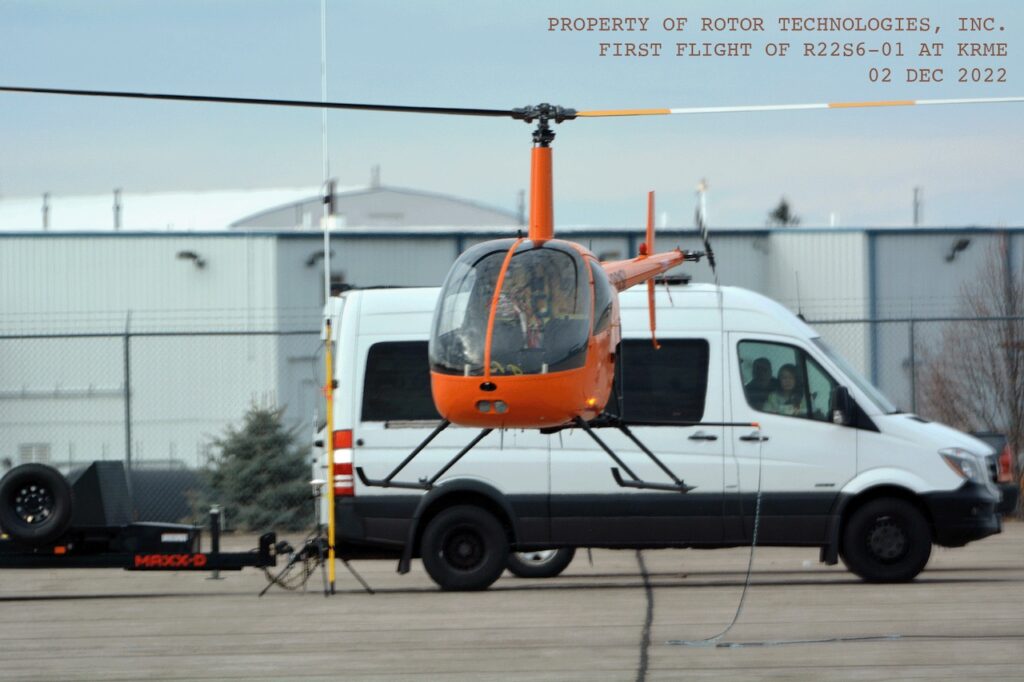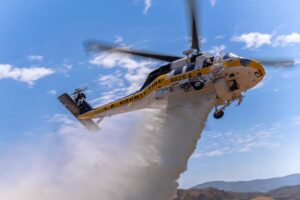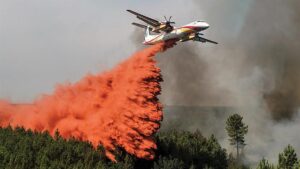
First teleoperated flight of Robinson helicopter with Rotor Technologies. The pilot is in the control van on the right.
Helitack and on-the-ground firefighters learn to keep eye contact with a helicopter pilot. So it’s unnerving to look into the cockpit of this Robinson R22 and not see a pilot’s helmet as it lifts into a hover. But this is the point – this is a video of the first test flight of an uncrewed, teleoperated helicopter focused on fire missions. And it takes just a moment to spot a focused face in the control van behind the hovering helicopter – the pilot, holding a cautious yet quite committed in-ground hover.
On December 2, 2022, Rotor Technologies’ teleoperation tools demonstrated the first and key technical challenge of moving the pilot out of the helicopter. The first three-minute flight of “Birdy McBirdface” (named in honor of “Boaty McBoatface,” a pioneering British uncrewed submersible) demonstrated the initial flight operations with their CloudPilot system and began testing and refining the remote piloting process.
To get to this launch, company co-founders Dr. Hector Xu and Greg McMillan studied the opportunities for improving aviation with technology. Their research showed that “firefighting came across as a very urgent need,” Xu said after the first series of test flights. “It’s a growing need in terms of the climate crisis. And people don’t have the tools to fight fires.”
After a year and half of programming and prototypes, they’ve launched their CloudPilot teleoperations system that relies on low earth orbit satellites to integrate accurate, real-time location-sharing and communications between the pilot and the helicopter.
While others are developing larger payload aircraft with autonomous piloting, Rotor is focused on light helicopters with real-time but remote piloting. By removing the pilot from the light helicopter, the payload increases from 170 pounds to 400, with a three-hour flight time. Even with that gain, Xu acknowledges that “in suppression operations, we will always be a little payload limited when compared with the competition.”
The advantages of a remote pilot become more apparent in precise and interactive operations, both high risk and more routine, “when flying low and slow in the deadman’s curve, such as ignitions, and providing logistics, food, water, tools. The case that is exciting is working on the fringes of the day. To build technology that is able to fly beyond visual flight restrictions, that improves situational awareness of remote pilots beyond the physical cockpit. The technology we’re building will improve situational awareness in low-visibility situations,” both to avoid inadvertent entry into instrument meteorology conditions (IMC) and to ensure safe flying in IMC. With CloudPilot technologies, even night operations become possible – think of the potential of aerial night ignitions.
Yet what adds the most value to a light helicopter with remote piloting? As Xu notes, “People have been building uncrewed rotorcraft for awhile … trying to build fully autonomous systems. We’re very clear this is teleoperations. A pilot is operating this remotely. Not a lot of people are building this technology, particularly in the civilian operations.”
And it is this clear relationship – between pilot and helicopter, and with fire operations on the ground and in the air – that Xu holds is unique in their approach, which will help build trust in new technologies that will in turn support safer mission operations overall.
Beyond wildland firefighting, use scenarios include disaster response, emergency management and eventually passenger certification.
With their success in the first flights, Rotor Technologies is planning for simulated firefighting scenarios in field tests this summer for their two prototype helicopters.
For more, see Rotor’s Medium post at https://medium.com/@rotor_ceo/first-flight-for-uncrewed-firefighting-helicopter-db5deb15a101.
LINK: https://fireaviation.com/2022/12/20/teleoperated-flight/







